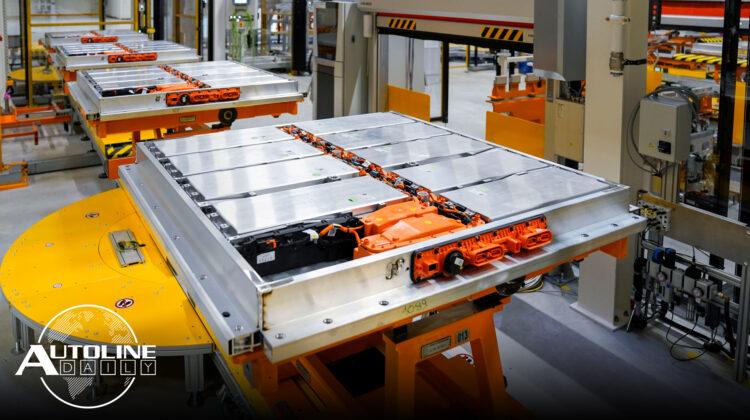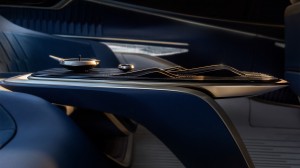
Listen to “AD #3201 – Automakers Boost EV Investment; Buick Teases New GL8; Ford Moves Back to Vertical Integration with EVs” on Spreaker.
Follow us on social media:
Runtime: 9:15
0:08 Bosch Leads Consortium on Silicon Carbide Chips
1:08 Automakers Split on UN Climate Pledge
2:04 Auto Industry Boosts EV Investment
3:17 NHTSA Pays Millions to Hyundai Whistleblower
4:16 Buick Teases New GL8 Flagship Concept Van
6:02 Ford Explains Move Back to Vertical Integration with EVs
7:53 Ford & Purdue Developing More Efficient Charging Cable
Visit our sponsors to thank them for their support of Autoline Daily: Bridgestone, Intrepid Control Systems, Magna and Schaeffler.
This is Autoline Daily, the show dedicated to enthusiasts of the global automotive industry.
BOSCH LEADS CONSORTIUM ON SILICON CARBIDE CHIPS
As we reported yesterday, onsemi, one of the largest U.S. semiconductor companies, says the global chip shortage is going to last longer than most analysts have predicted. That’s in part to automakers wanting chips made from silicon carbide, which are more efficient but take longer to produce than regular silicon chips. So to help tackle the problem, the supplier Bosch is leading a consortium of 34 companies, universities and research institutes to create a supply chain in Europe for silicon carbide chips. The project has a budget of 89 million euros and runs through 2024. The partners will work on developing new silicon carbide technology and production processes. And they’ll also work to secure the proper machinery for suppliers to make the chips. Between now and 2025, the global silicon carbide chip market is expected to grow 30% on average annually to over 2.5 billion dollars.
AUTO INDUSTRY SPLIT ON UN CLIMATE PLEDGE
A group of automakers earlier today signed a pledge to aim for all new vehicle sales to be zero emission globally by 2040. It’s part of the United Nations Climate Change summit taking place in Glasgow, Scotland right now. Ford, GM, Volvo, Daimler, BYD and Jaguar Land Rover signed the pledge, as did several countries including India, Poland and New Zealand. The goal is to cut carbon emissions to curb global warming. However, it’s not too clear how much teeth the pledge has, since Volkswagen, Toyota, Stellantis, Honda, Nissan, BMW and the Hyundai Group did not sign it. Nor did the U.S., Germany or China. Some automakers were hesitant to sign the pledge because it doesn’t require governments to make sure the proper charging and grid infrastructure will be built to handle the transition to electric vehicles.
AUTO INDUSTRY BOOSTS EV INVESTMENT
But either way, the auto industry is stepping up its commitment to electric vehicles. According to Reuters, carmakers are investing $515 billion globally through 2030 on EVs and batteries. That’s up from $300 billion, less than three years ago.
NHTSA PAYS MILLIONS TO HYUNDAI WHISTLEBLOWER
It pays to be a tattletale. In 2016, a then Hyundai engineer flew from South Korea to Washington DC to inform U.S. regulators that his employer of 26 years was withholding defect information, related to issues with the Group’s Theta II engines. That directly resulted in an investigation and a fine of $210 million, $80 million of which was paid in cash. And because NHTSA had set up a whistleblower award program a year earlier, it entitled the engineer to a large payout. Over $24 million to be exact. It’s the first time anything has been paid out since the program was set up and was the maximum amount allowed by law. NHTSA says whistleblowers play an important role in that they can share information that is hidden from the agency, which can have an impact on public health and safety. It’s also a helluva incentive to tattle.
BUICK TEASES NEW GL8 FLAGSHIP CONCEPT VAN
It might surprise you to know that Buick has over two decades of van experience in China with the GL8 that it first introduced in 1999. I know we’ve shown the vehicle before, but if you’ve never seen it, you might be equally surprised at how luxurious it can be. And it plans to push the boundaries of the high-end luxury van segment even further. Just take a look at this futuristic, lounge-like interior of the new GL8 Flagship Concept that will debut at the Guangzhou auto show on November 19th. It’s the only picture Buick shared but it says the model is close to production and will also preview the van’s new styling. So, stay tuned. More to come soon.
And hey, be sure to join us tomorrow for Autoline After Hours. Our guests will be Ron Harbour and Dean Weston from a startup called Rite Angle, which developed a new process to make hydrogen from water cheaply and safely. If you have any questions for them, email us at viewermail@autoline.tv or tweet us @Autoline. And join us this Thursday afternoon to learn more.
FORD EXPLAINS MOVE BACK TO VERTICAL INTEGRATION WITH EVs
Over 100 years ago the Ford Motor Company set the stage for vertical integration. For over half a century automakers typically made 70% of everything in-house and bought 30% of their parts and components from suppliers. Then came the outsourcing craze of the 1980’s and ‘90’s, which flipped everything around. Today, most automakers only make 20-30% of a vehicle in-house and buy the rest from suppliers. But with the move to electric cars, we’re seeing a big move back to vertical integration. Lisa Drake, the COO of Ford in North America, is on Autoline This Week, and she explains why the company is going back to being vertically integrated, at least when it comes to EVs.
“To be quite frank, you have to decide what’s the most important part of the vehicle that you want to control. And given the battery cost, given the supply of these raw materials, especially the domestic supply and what I’ll call the ethical supply of these materials, you have to control that. And now that we have the scale that we have, we’re able to do that. We’re able to come to the table, whether it’s with government, whether it’s mining companies, whether it’s cell suppliers. And we have the scale and commitment and frankly the product, the exceptional product, that it’s giving them the confidence that, yep, they want to invest with Ford. And they’re allowing us to be a deeper part of that value chain. In the past we didn’t have that volume necessarily. So we had to transact with our cell suppliers. And we’re in a very different place today.”
Ford is not the only one doing it. So is GM. And Tesla is more vertically integrated than anyone. But it’s so interesting to see the industry returning to a practice that it pioneered well over a century ago.
FORD & PURDUE DEVELOPING MORE EFFICIENT CHARGING CABLE
Speaking of Ford and EVs, it’s working with Purdue University to increase charging speed. Right now if you want to make charging faster you have to increase the current, but if you increase current it produces a lot of heat and if you don’t do anything with that heat, charging slows down. That’s why some of the more powerful stations are using liquid-cooled charging cables to get rid of that excess heat. Ford and Purdue are working on a new cable that still uses liquid cooling, but they have come up with a way to change the coolant from a liquid to a vapor and say it can extract even more heat from the cable, compared to the liquid-only system. They think they can deliver significantly more power this way, but it’s still going to require a lot of R&D. Purdue plans to begin testing a prototype cable in the next two years.
And that wraps up today’s report, thanks for watching.
Thanks to our partner for embedding Autoline Daily on its website: WardsAuto.com
Seamus and Sean McElroy cover the latest news in the automotive industry for Autoline Daily.







